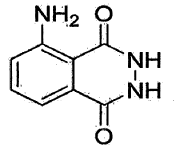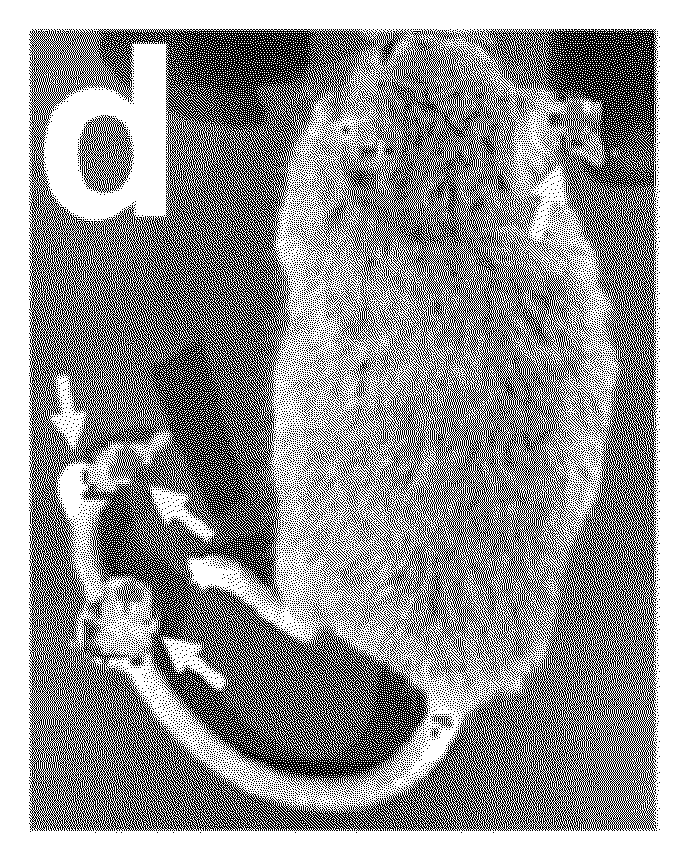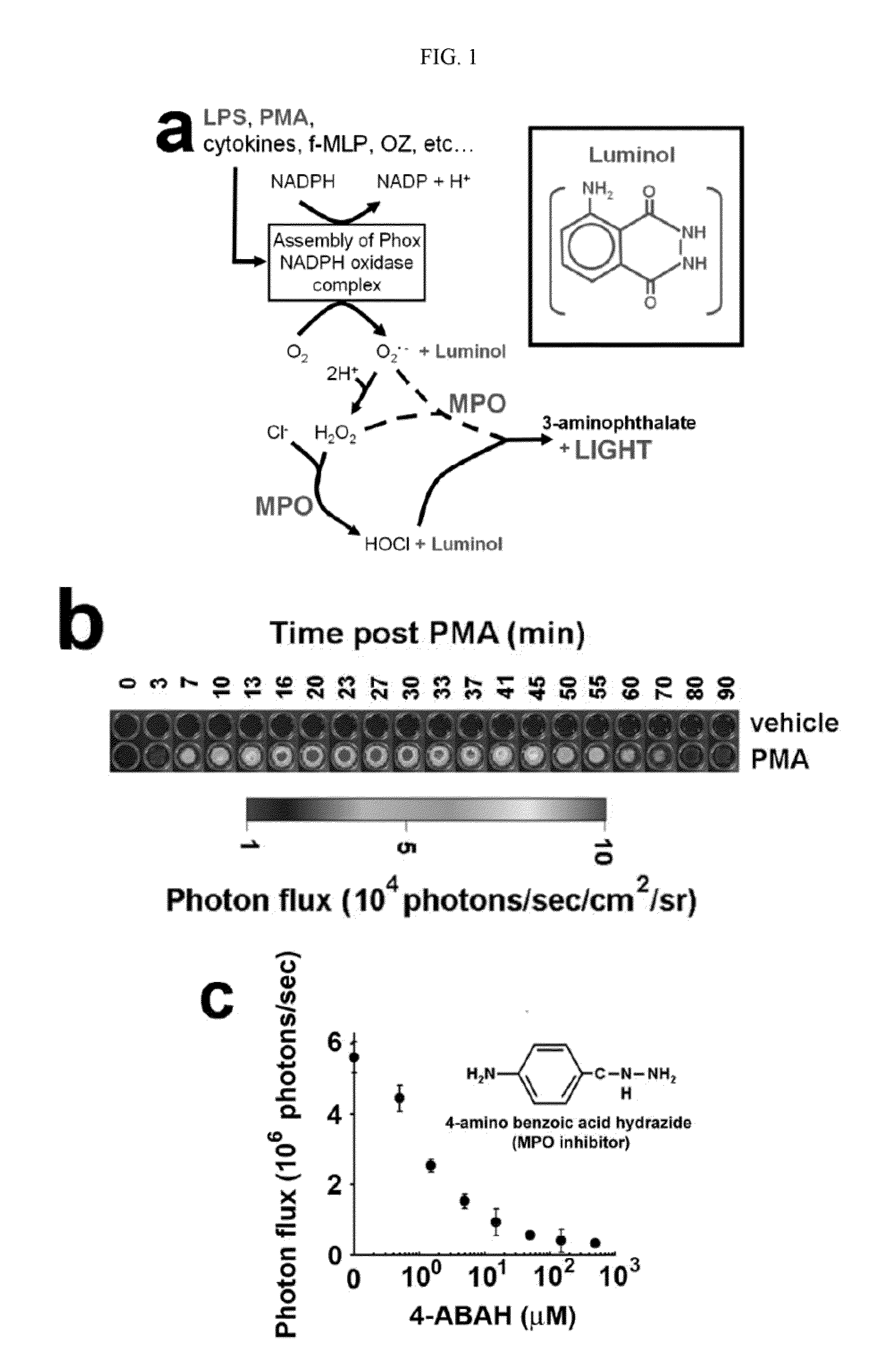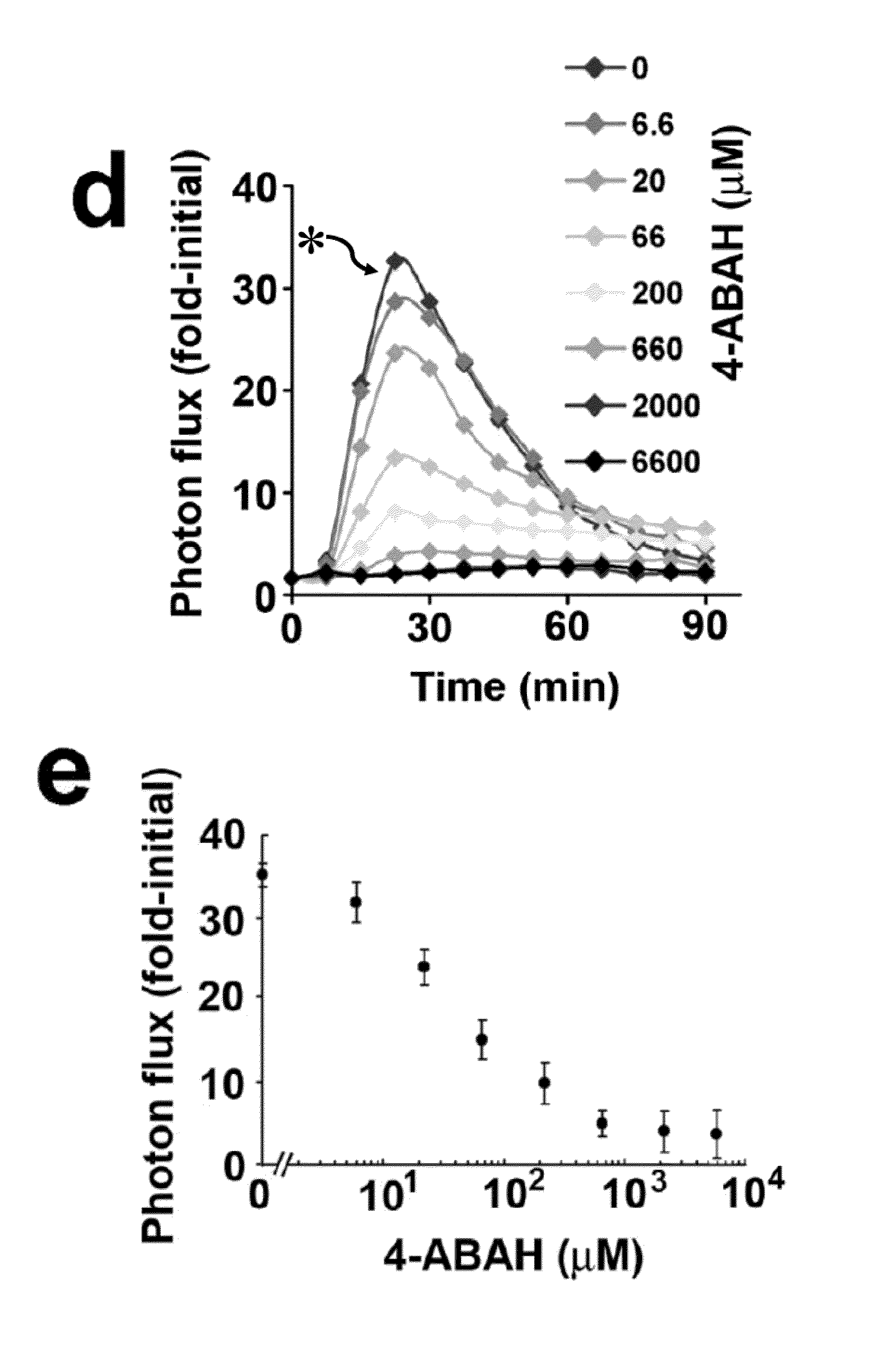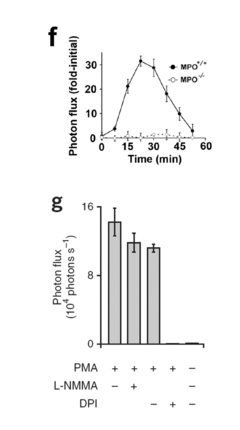Luminol's Influence on Converting Research into Practice
AUG 19, 20259 MIN READ
Generate Your Research Report Instantly with AI Agent
Patsnap Eureka helps you evaluate technical feasibility & market potential.
Luminol Technology Background and Objectives
Luminol, a chemiluminescent compound, has been a cornerstone in forensic science and biochemical research for decades. Its ability to emit light when oxidized has made it an invaluable tool in various applications, particularly in the detection of blood traces at crime scenes. The technology behind luminol has evolved significantly since its discovery in the early 20th century, with ongoing research aimed at enhancing its sensitivity, specificity, and practical applicability.
The primary objective of luminol technology is to provide a non-invasive, highly sensitive method for detecting trace amounts of blood and other biological materials. This goal has driven continuous improvements in luminol formulations, application techniques, and detection methodologies. Researchers have focused on optimizing the chemical composition to increase light emission intensity and duration, while also working to minimize false positives and reduce interference from other substances.
In recent years, the scope of luminol technology has expanded beyond its traditional forensic applications. The scientific community has been exploring its potential in medical diagnostics, environmental monitoring, and even in the detection of explosives. This broadening of applications has led to a surge in research activities, with interdisciplinary teams collaborating to push the boundaries of luminol's capabilities.
The evolution of luminol technology is closely tied to advancements in related fields such as analytical chemistry, biochemistry, and optical imaging. The integration of luminol-based techniques with cutting-edge technologies like spectroscopy, microfluidics, and nanotechnology has opened up new avenues for research and practical applications. These synergies have resulted in more sensitive, specific, and versatile luminol-based detection systems.
One of the key trends in luminol research is the development of enhanced formulations that can overcome limitations such as rapid fading of the luminescent signal and susceptibility to environmental factors. Scientists are exploring novel chemical modifications and delivery systems to improve the stability and longevity of luminol reactions. Additionally, there is a growing focus on creating eco-friendly and non-toxic luminol variants to address safety concerns and expand its use in biological and environmental applications.
The translation of luminol research into practical applications faces several challenges, including the need for standardization, validation of new techniques, and overcoming regulatory hurdles. However, the potential benefits in fields ranging from criminal investigations to medical diagnostics continue to drive innovation and investment in luminol technology. As research progresses, the goal is to develop more robust, user-friendly, and cost-effective luminol-based solutions that can be readily adopted by practitioners across various disciplines.
The primary objective of luminol technology is to provide a non-invasive, highly sensitive method for detecting trace amounts of blood and other biological materials. This goal has driven continuous improvements in luminol formulations, application techniques, and detection methodologies. Researchers have focused on optimizing the chemical composition to increase light emission intensity and duration, while also working to minimize false positives and reduce interference from other substances.
In recent years, the scope of luminol technology has expanded beyond its traditional forensic applications. The scientific community has been exploring its potential in medical diagnostics, environmental monitoring, and even in the detection of explosives. This broadening of applications has led to a surge in research activities, with interdisciplinary teams collaborating to push the boundaries of luminol's capabilities.
The evolution of luminol technology is closely tied to advancements in related fields such as analytical chemistry, biochemistry, and optical imaging. The integration of luminol-based techniques with cutting-edge technologies like spectroscopy, microfluidics, and nanotechnology has opened up new avenues for research and practical applications. These synergies have resulted in more sensitive, specific, and versatile luminol-based detection systems.
One of the key trends in luminol research is the development of enhanced formulations that can overcome limitations such as rapid fading of the luminescent signal and susceptibility to environmental factors. Scientists are exploring novel chemical modifications and delivery systems to improve the stability and longevity of luminol reactions. Additionally, there is a growing focus on creating eco-friendly and non-toxic luminol variants to address safety concerns and expand its use in biological and environmental applications.
The translation of luminol research into practical applications faces several challenges, including the need for standardization, validation of new techniques, and overcoming regulatory hurdles. However, the potential benefits in fields ranging from criminal investigations to medical diagnostics continue to drive innovation and investment in luminol technology. As research progresses, the goal is to develop more robust, user-friendly, and cost-effective luminol-based solutions that can be readily adopted by practitioners across various disciplines.
Market Analysis for Luminol Applications
The market for luminol applications has shown significant growth and diversification in recent years, driven by advancements in forensic science, medical diagnostics, and industrial processes. Luminol, a chemical compound known for its chemiluminescent properties, has found widespread use in crime scene investigation and blood detection, which remains its primary market. The global forensic technologies market, where luminol plays a crucial role, is expected to expand substantially due to increasing crime rates and the need for more sophisticated investigative techniques.
In the forensic sector, luminol's ability to detect trace amounts of blood, even after cleaning attempts, has made it an indispensable tool for law enforcement agencies worldwide. This has led to a steady demand from police departments, forensic laboratories, and private investigation firms. The market for luminol in this sector is characterized by consistent growth, with new formulations and application methods continually being developed to enhance its effectiveness and ease of use.
Beyond forensics, luminol has found applications in the healthcare industry, particularly in diagnostic testing and medical research. Its chemiluminescent properties are utilized in various biochemical assays and imaging techniques, contributing to advancements in disease detection and monitoring. This diversification has opened up new market opportunities, with pharmaceutical companies and medical research institutions becoming significant consumers of luminol and related products.
The industrial sector represents another growing market for luminol applications. Its use in detecting metal traces and corrosion in pipelines and machinery has gained traction in industries such as oil and gas, manufacturing, and water treatment. This expansion into industrial applications has broadened the customer base for luminol products and stimulated research into new formulations tailored for specific industrial needs.
Market analysis indicates that North America currently dominates the global luminol market, followed by Europe and Asia-Pacific. The United States, in particular, shows the highest consumption rate, driven by its large forensic science industry and advanced healthcare research sector. However, emerging economies in Asia and Latin America are expected to witness the fastest growth in luminol applications, fueled by increasing investments in forensic infrastructure and rising awareness of its industrial applications.
The market landscape for luminol is characterized by a mix of established chemical companies and specialized forensic supply firms. Competition is primarily based on product quality, reliability, and the development of innovative applications. As research continues to uncover new uses for luminol, the market is expected to see the entry of new players, particularly those focusing on niche applications or improved formulations.
In the forensic sector, luminol's ability to detect trace amounts of blood, even after cleaning attempts, has made it an indispensable tool for law enforcement agencies worldwide. This has led to a steady demand from police departments, forensic laboratories, and private investigation firms. The market for luminol in this sector is characterized by consistent growth, with new formulations and application methods continually being developed to enhance its effectiveness and ease of use.
Beyond forensics, luminol has found applications in the healthcare industry, particularly in diagnostic testing and medical research. Its chemiluminescent properties are utilized in various biochemical assays and imaging techniques, contributing to advancements in disease detection and monitoring. This diversification has opened up new market opportunities, with pharmaceutical companies and medical research institutions becoming significant consumers of luminol and related products.
The industrial sector represents another growing market for luminol applications. Its use in detecting metal traces and corrosion in pipelines and machinery has gained traction in industries such as oil and gas, manufacturing, and water treatment. This expansion into industrial applications has broadened the customer base for luminol products and stimulated research into new formulations tailored for specific industrial needs.
Market analysis indicates that North America currently dominates the global luminol market, followed by Europe and Asia-Pacific. The United States, in particular, shows the highest consumption rate, driven by its large forensic science industry and advanced healthcare research sector. However, emerging economies in Asia and Latin America are expected to witness the fastest growth in luminol applications, fueled by increasing investments in forensic infrastructure and rising awareness of its industrial applications.
The market landscape for luminol is characterized by a mix of established chemical companies and specialized forensic supply firms. Competition is primarily based on product quality, reliability, and the development of innovative applications. As research continues to uncover new uses for luminol, the market is expected to see the entry of new players, particularly those focusing on niche applications or improved formulations.
Current Challenges in Luminol Research-to-Practice
Despite the widespread use of luminol in forensic science and its potential applications in various fields, several challenges persist in translating luminol research into practical applications. One of the primary obstacles is the sensitivity and specificity of luminol-based detection methods. While luminol is known for its ability to detect trace amounts of blood, it can also produce false positives when reacting with other substances, such as certain plant materials or cleaning agents. This lack of specificity can lead to misinterpretation of evidence in forensic investigations, potentially compromising the integrity of criminal cases.
Another significant challenge lies in the optimization of luminol formulations for different environmental conditions. The effectiveness of luminol can be influenced by factors such as pH, temperature, and the presence of interfering substances. Researchers are still working to develop more robust formulations that can maintain their efficacy across a wider range of conditions, particularly in complex crime scene environments where multiple variables may affect the chemical reaction.
The stability and longevity of luminol solutions also present ongoing challenges. Current formulations have a limited shelf life and can degrade over time, affecting their reliability in field applications. This necessitates frequent preparation of fresh solutions, which can be time-consuming and impractical for law enforcement agencies with limited resources. Developing more stable luminol formulations that retain their potency for extended periods is crucial for improving the practicality of luminol-based techniques in real-world scenarios.
Furthermore, the quantification and standardization of luminol-based detection methods remain areas of active research. While luminol can provide valuable qualitative information about the presence of blood, achieving accurate quantitative measurements of blood content based on luminescence intensity is still challenging. This limitation hinders the development of more precise forensic analysis techniques and restricts the potential applications of luminol in other fields, such as medical diagnostics or environmental monitoring.
The integration of luminol-based detection with other analytical techniques also presents challenges in research-to-practice conversion. While luminol offers rapid screening capabilities, it often needs to be complemented by more specific confirmatory tests. Developing seamless workflows that combine luminol screening with advanced analytical methods, such as DNA analysis or spectroscopic techniques, is essential for enhancing the overall effectiveness and reliability of forensic investigations.
Lastly, the translation of luminol research into practical applications faces regulatory and legal hurdles. The admissibility of luminol-based evidence in court proceedings varies across jurisdictions, and there is a need for standardized protocols and guidelines for its use in forensic investigations. Addressing these legal and regulatory challenges is crucial for wider adoption and acceptance of luminol-based techniques in the criminal justice system.
Another significant challenge lies in the optimization of luminol formulations for different environmental conditions. The effectiveness of luminol can be influenced by factors such as pH, temperature, and the presence of interfering substances. Researchers are still working to develop more robust formulations that can maintain their efficacy across a wider range of conditions, particularly in complex crime scene environments where multiple variables may affect the chemical reaction.
The stability and longevity of luminol solutions also present ongoing challenges. Current formulations have a limited shelf life and can degrade over time, affecting their reliability in field applications. This necessitates frequent preparation of fresh solutions, which can be time-consuming and impractical for law enforcement agencies with limited resources. Developing more stable luminol formulations that retain their potency for extended periods is crucial for improving the practicality of luminol-based techniques in real-world scenarios.
Furthermore, the quantification and standardization of luminol-based detection methods remain areas of active research. While luminol can provide valuable qualitative information about the presence of blood, achieving accurate quantitative measurements of blood content based on luminescence intensity is still challenging. This limitation hinders the development of more precise forensic analysis techniques and restricts the potential applications of luminol in other fields, such as medical diagnostics or environmental monitoring.
The integration of luminol-based detection with other analytical techniques also presents challenges in research-to-practice conversion. While luminol offers rapid screening capabilities, it often needs to be complemented by more specific confirmatory tests. Developing seamless workflows that combine luminol screening with advanced analytical methods, such as DNA analysis or spectroscopic techniques, is essential for enhancing the overall effectiveness and reliability of forensic investigations.
Lastly, the translation of luminol research into practical applications faces regulatory and legal hurdles. The admissibility of luminol-based evidence in court proceedings varies across jurisdictions, and there is a need for standardized protocols and guidelines for its use in forensic investigations. Addressing these legal and regulatory challenges is crucial for wider adoption and acceptance of luminol-based techniques in the criminal justice system.
Existing Luminol Commercialization Strategies
01 Luminol in chemiluminescence detection
Luminol is widely used in chemiluminescence detection methods for various applications. It produces a bright blue light when oxidized, making it useful for detecting blood traces in forensic investigations, as well as in analytical chemistry for detecting certain substances or reactions.- Luminol-based detection methods: Luminol is widely used in detection methods due to its chemiluminescent properties. It can be used to detect various substances, including blood traces, metal ions, and specific chemicals. These methods often involve the oxidation of luminol in the presence of a catalyst, resulting in light emission that can be measured and analyzed.
- Luminol in forensic applications: Luminol plays a crucial role in forensic science, particularly in crime scene investigations. It is used to detect trace amounts of blood, even after cleaning attempts. The luminol solution reacts with the iron in hemoglobin, producing a blue luminescence that can be photographed or observed in darkness, aiding in the identification of potential evidence.
- Luminol-based biosensors and assays: Luminol is utilized in the development of biosensors and assays for various analytical applications. These include the detection of specific proteins, enzymes, or other biomolecules. The high sensitivity of luminol-based systems allows for the detection of low concentrations of target analytes, making it valuable in medical diagnostics and environmental monitoring.
- Luminol derivatives and modifications: Research has focused on developing luminol derivatives and modifications to enhance its properties or tailor it for specific applications. These modifications can improve sensitivity, selectivity, or stability of luminol-based systems. Some approaches involve chemical modifications of the luminol molecule, while others focus on formulation improvements or the addition of synergistic compounds.
- Luminol in environmental and industrial applications: Luminol finds applications in environmental monitoring and industrial processes. It can be used to detect pollutants, monitor water quality, or assess industrial effluents. The chemiluminescent properties of luminol allow for real-time monitoring and rapid detection of various substances, making it valuable in quality control and environmental protection efforts.
02 Luminol-based biosensors and analytical devices
Luminol is incorporated into biosensors and analytical devices for detecting specific molecules or compounds. These devices utilize the chemiluminescent properties of luminol to provide sensitive and selective detection of target analytes in various fields, including medical diagnostics and environmental monitoring.Expand Specific Solutions03 Luminol in imaging and visualization techniques
Luminol is used in imaging and visualization techniques, particularly in biological and medical research. It can be used to visualize cellular processes, detect specific proteins or enzymes, and create luminescent markers for various imaging applications.Expand Specific Solutions04 Luminol derivatives and modifications
Research focuses on developing luminol derivatives and modifications to enhance its properties or tailor its performance for specific applications. These modifications may include changes to the molecular structure, addition of functional groups, or combination with other compounds to improve sensitivity, selectivity, or stability.Expand Specific Solutions05 Luminol in environmental and industrial applications
Luminol finds applications in environmental monitoring and industrial processes. It can be used to detect pollutants, monitor water quality, or as an indicator in various industrial chemical reactions. The chemiluminescent properties of luminol make it valuable for real-time monitoring and rapid detection in these fields.Expand Specific Solutions
Key Players in Luminol Research and Development
The competitive landscape for Luminol's influence on converting research into practice is characterized by a diverse array of players across academia, industry, and research institutions. The market is in a growth phase, with increasing demand for translational research solutions. The global market size for research-to-practice technologies is expanding, driven by the need for efficient knowledge transfer in various sectors. Technologically, the field is rapidly evolving, with companies like Alverix, Inc. and MetrioPharm AG leading in developing innovative solutions. Academic institutions such as Washington University in St. Louis and the University of Electronic Science & Technology of China are contributing significantly to advancing the theoretical framework. The involvement of major pharmaceutical companies like Lupin Ltd and FUJIFILM Corp. indicates the growing commercial potential and maturity of this technology.
Cyanagen Srl
Technical Solution: Cyanagen Srl has developed innovative luminol-based chemiluminescent substrates for enhanced sensitivity in Western blotting and ELISA applications. Their LumiSensor™ technology incorporates modified luminol derivatives and enhancers to produce a more intense and sustained light emission. This allows for detection of low abundance proteins and reduces the need for multiple exposures[1]. The company has also created specialized formulations optimized for specific antibody types and detection instruments, improving signal-to-noise ratios in research and diagnostic assays[2].
Strengths: Highly sensitive detection, longer signal duration, versatility across applications. Weaknesses: May require specialized equipment, potentially higher cost compared to traditional substrates.
FUJIFILM Corp.
Technical Solution: FUJIFILM has leveraged its expertise in photographic technology to develop advanced luminol-based chemiluminescence systems for medical diagnostics and life science research. Their LAS-4000 imaging system combines high-sensitivity CCD cameras with optimized luminol reagents to achieve femtogram-level protein detection in Western blots[3]. FUJIFILM has also created automated immunoassay analyzers that utilize luminol chemistry for rapid and precise quantification of biomarkers in clinical samples[4]. These systems integrate sample handling, reagent delivery, and signal detection to streamline laboratory workflows and improve reproducibility.
Strengths: High-throughput capabilities, integration of imaging and analysis, established presence in clinical diagnostics. Weaknesses: High initial investment for equipment, may require specific consumables.
Breakthrough Luminol Research Findings
Method for producing a crystalline form of 5-amino-2,3-dihydrophthalazine-1,4-dione
PatentWO2017140422A1
Innovation
- A method involving dissolving 5-amino-2,3-dihydrophthalazine-1,4-dione in a refluxing ethanol-water solution, cooling, separating the precipitated crystals, and drying to produce a phase-pure crystalline form of luminol, which can be resuspended and washed for enhanced purity.
Bioluminescence imaging of myeloperoxidase activity in vivo, methods, compositions and apparatuses therefor
PatentInactiveUS20110250145A1
Innovation
- The development of methods for non-invasive imaging of MPO activity using luminogenic-optical probes that emit light upon contact with oxidizing agents, allowing for the visualization of MPO activity in vivo, particularly through bioluminescence imaging (BLI) techniques.
Regulatory Framework for Luminol Use
The regulatory framework for luminol use is a critical aspect of its application in forensic science and crime scene investigation. Various governmental bodies and professional organizations have established guidelines and protocols to ensure the safe and effective use of luminol in criminal investigations.
In the United States, the use of luminol is primarily regulated by the Environmental Protection Agency (EPA) and the Occupational Safety and Health Administration (OSHA). The EPA classifies luminol as a chemical substance and requires proper handling and disposal procedures to minimize environmental impact. OSHA, on the other hand, focuses on worker safety and mandates specific protective measures for personnel handling luminol during investigations.
Internationally, the use of luminol is subject to diverse regulations across different countries. The European Union, for instance, has implemented the Registration, Evaluation, Authorization, and Restriction of Chemicals (REACH) regulation, which affects the import, manufacture, and use of luminol within EU member states. This regulation ensures that the potential risks associated with luminol are thoroughly assessed and managed.
Forensic science organizations, such as the International Association for Identification (IAI) and the American Academy of Forensic Sciences (AAFS), have developed best practice guidelines for the use of luminol in crime scene investigations. These guidelines often include recommendations on proper application techniques, documentation procedures, and quality control measures to ensure the reliability and admissibility of evidence obtained through luminol testing.
Many law enforcement agencies have incorporated luminol-specific protocols into their standard operating procedures. These protocols typically outline the circumstances under which luminol should be used, the proper preparation and application methods, and the necessary safety precautions. They also address the potential limitations and interferences that may affect luminol's effectiveness in different environmental conditions.
The admissibility of luminol-based evidence in court proceedings is another crucial aspect of the regulatory framework. Legal precedents and case law have shaped the acceptance of luminol evidence in various jurisdictions. Courts often require expert testimony to explain the scientific principles behind luminol and to address potential sources of false positives or negatives.
As research continues to advance our understanding of luminol's properties and limitations, regulatory frameworks are evolving to incorporate new findings. This ongoing process ensures that the use of luminol in forensic investigations remains both scientifically sound and legally defensible, ultimately contributing to the effective conversion of research into practice in the field of criminal justice.
In the United States, the use of luminol is primarily regulated by the Environmental Protection Agency (EPA) and the Occupational Safety and Health Administration (OSHA). The EPA classifies luminol as a chemical substance and requires proper handling and disposal procedures to minimize environmental impact. OSHA, on the other hand, focuses on worker safety and mandates specific protective measures for personnel handling luminol during investigations.
Internationally, the use of luminol is subject to diverse regulations across different countries. The European Union, for instance, has implemented the Registration, Evaluation, Authorization, and Restriction of Chemicals (REACH) regulation, which affects the import, manufacture, and use of luminol within EU member states. This regulation ensures that the potential risks associated with luminol are thoroughly assessed and managed.
Forensic science organizations, such as the International Association for Identification (IAI) and the American Academy of Forensic Sciences (AAFS), have developed best practice guidelines for the use of luminol in crime scene investigations. These guidelines often include recommendations on proper application techniques, documentation procedures, and quality control measures to ensure the reliability and admissibility of evidence obtained through luminol testing.
Many law enforcement agencies have incorporated luminol-specific protocols into their standard operating procedures. These protocols typically outline the circumstances under which luminol should be used, the proper preparation and application methods, and the necessary safety precautions. They also address the potential limitations and interferences that may affect luminol's effectiveness in different environmental conditions.
The admissibility of luminol-based evidence in court proceedings is another crucial aspect of the regulatory framework. Legal precedents and case law have shaped the acceptance of luminol evidence in various jurisdictions. Courts often require expert testimony to explain the scientific principles behind luminol and to address potential sources of false positives or negatives.
As research continues to advance our understanding of luminol's properties and limitations, regulatory frameworks are evolving to incorporate new findings. This ongoing process ensures that the use of luminol in forensic investigations remains both scientifically sound and legally defensible, ultimately contributing to the effective conversion of research into practice in the field of criminal justice.
Ethical Considerations in Luminol Applications
The application of luminol in forensic science and criminal investigations raises several ethical considerations that must be carefully addressed. One primary concern is the potential for false positives, which could lead to wrongful accusations or convictions. Luminol's high sensitivity can sometimes react with substances other than blood, such as certain cleaning products or plant materials, potentially misleading investigators and compromising the integrity of evidence.
Privacy issues also come into play when using luminol in crime scene investigations. The chemical's ability to reveal blood traces that are invisible to the naked eye may inadvertently expose personal information or medical conditions of individuals not related to the crime. This raises questions about the balance between thorough evidence collection and respecting personal privacy rights.
The use of luminol in public spaces or shared living areas presents another ethical dilemma. While it may be necessary for investigative purposes, the application of luminol could cause distress or psychological harm to individuals who live or work in these spaces, particularly if they were unaware of past events that occurred there.
There are also concerns about the potential health risks associated with luminol exposure. Although generally considered safe when used properly, prolonged or repeated exposure to luminol and its byproducts may pose health hazards to crime scene investigators and other personnel. Ensuring proper safety protocols and protective equipment is an ethical imperative to safeguard the well-being of those involved in its application.
The admissibility of luminol-based evidence in court proceedings is another ethical consideration. Given the potential for false positives and the destructive nature of the test on certain types of evidence, there is ongoing debate about the weight that should be given to luminol-based findings in legal contexts. This raises questions about the ethical responsibility of forensic experts in presenting and interpreting such evidence.
Lastly, the ethical use of luminol extends to its application in research and training settings. Ensuring that luminol is used responsibly in academic and professional development contexts, with appropriate safeguards and ethical guidelines, is crucial for maintaining public trust in forensic science and criminal justice systems.
Privacy issues also come into play when using luminol in crime scene investigations. The chemical's ability to reveal blood traces that are invisible to the naked eye may inadvertently expose personal information or medical conditions of individuals not related to the crime. This raises questions about the balance between thorough evidence collection and respecting personal privacy rights.
The use of luminol in public spaces or shared living areas presents another ethical dilemma. While it may be necessary for investigative purposes, the application of luminol could cause distress or psychological harm to individuals who live or work in these spaces, particularly if they were unaware of past events that occurred there.
There are also concerns about the potential health risks associated with luminol exposure. Although generally considered safe when used properly, prolonged or repeated exposure to luminol and its byproducts may pose health hazards to crime scene investigators and other personnel. Ensuring proper safety protocols and protective equipment is an ethical imperative to safeguard the well-being of those involved in its application.
The admissibility of luminol-based evidence in court proceedings is another ethical consideration. Given the potential for false positives and the destructive nature of the test on certain types of evidence, there is ongoing debate about the weight that should be given to luminol-based findings in legal contexts. This raises questions about the ethical responsibility of forensic experts in presenting and interpreting such evidence.
Lastly, the ethical use of luminol extends to its application in research and training settings. Ensuring that luminol is used responsibly in academic and professional development contexts, with appropriate safeguards and ethical guidelines, is crucial for maintaining public trust in forensic science and criminal justice systems.
Unlock deeper insights with Patsnap Eureka Quick Research — get a full tech report to explore trends and direct your research. Try now!
Generate Your Research Report Instantly with AI Agent
Supercharge your innovation with Patsnap Eureka AI Agent Platform!
